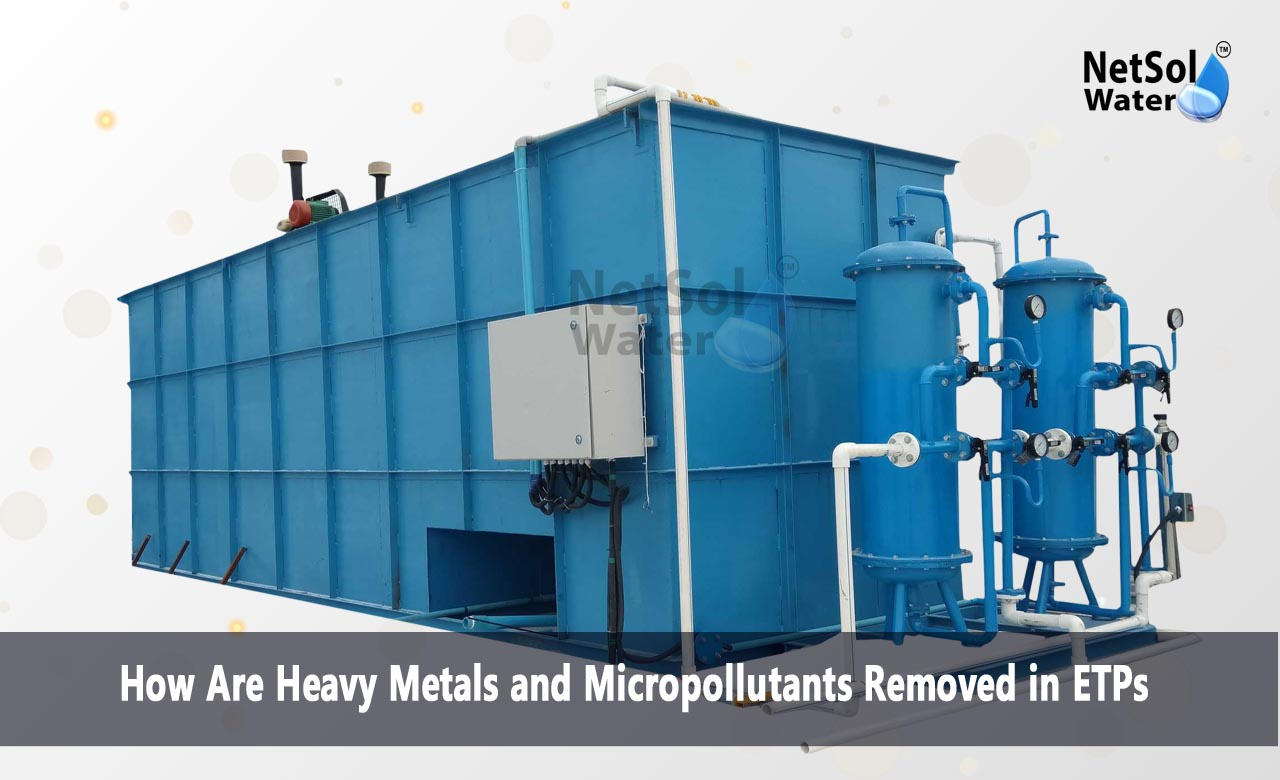How Are Heavy Metals and Micropollutants Removed in ETPs?
Effluent treatment plants clean water before it reaches rivers or seas. Heavy metals and micropollutants can damage wildlife and spoil soil. Plants must remove these substances to meet safety rules and protect health. Netsol Water stands as a leading effluent treatment plant manufacturer. The company designs and builds systems that deliver clear water each time. Clients around the globe trust its proven methods and solid results. In this blog we will answer the question How Are Heavy Metals and Micropollutants Removed in ETPs. We cover the main removal steps and explain how each one works.
Precipitation Methods
Precipitation methods play a key role in removing dissolved ions. They turn harmful metal ions into solid particles that can settle out of water. These methods provide reliable removal of lead copper and cadmium. Let us have a look at some methods
Chemical Precipitation
Chemical precipitation uses agents that react with metal ions and form solids. Plants add lime or sodium hydroxide to raise pH levels. The metal ions bond with hydroxide and form insoluble particles. These solids fall out of the water and settle in a tank. Workers then remove the settled solids by sedimentation or filtration. This process handles high metal volumes with simple equipment.
Sulfide Precipitation
Sulfide precipitation adds hydrogen sulfide to the effluent stream. The sulfide ions bind with metal ions and form metal sulfide solids. These solids have low solubility and settle faster than hydroxides. Operators can remove them with clarifiers or belt filters. This method excels for metals that resist other precipitation steps.
Adsorption Techniques
Adsorption methods capture contaminants on solid surfaces. They prove effective for low concentration pollutants. Let us have a look at some methods
Activated Carbon Adsorption
Activated carbon offers a large surface area that adsorbs micropollutants. The water passes through carbon beds. Organic micropollutants stick to the carbon surface. The beds then regenerate or get replaced. This method suits removal of pesticides dyes and many organic compounds.
Ion Exchange Adsorption
Ion exchange uses resin beads that exchange ions with the water. Contaminants like heavy metals swap places with harmless ions on the beads. After saturation the resin regenerates with a salt solution. The process yields high removal rates for copper lead and nickel. It works well for polishing treated water.
Membrane Filtration Processes
Membrane filtration forces water through selective barriers. It isolates tiny particles and dissolved substances from water. Let us have a look at some processes
Ultrafiltration
Ultrafiltration uses membranes with pore sizes around 0.01 micron. It removes colloids bacteria and some large organic molecules. The process runs under low pressure and needs little energy. Operators rinse the membranes regularly to keep flow rates high.
Reverse Osmosis
Reverse osmosis uses a dense membrane that blocks nearly all dissolved solids. It applies high pressure to push water through the membrane. Heavy metals and micropollutants lodge on the feed side. The clean water passes through as permeate. This method provides one of the highest removal rates in ETPs.
Advanced Oxidation Processes
Advanced oxidation processes break down micropollutants by using powerful oxidants. They act on complex molecules to make them simpler and less harmful. Let us have a look at some methods
Ozone Treatment
Ozone treatment injects ozone gas into the water stream. The ozone oxidizes organic micropollutants into smaller compounds. It also kills bacteria and viruses. After reaction the water flows into a contact tank. Any excess ozone then converts back to oxygen.
UV Photolysis
UV photolysis shines ultraviolet light on water in the presence of a catalyst. The light breaks pollutant bonds and creates reactive radicals. These radicals then attack remaining contaminants. This method works well for pharmaceuticals and personal care chemicals.
Conclusion
Netsol Water leads the field in designing systems that show how heavy metals and micropollutants are removed in ETPs with high efficiency. Each removal step forms part of an integrated treatment train. Netsol Water applies its deep experience to deliver reliable results for any industry. If you want to learn more about heavy metals and micropollutants removalin ETPs please get in touch today or request a consultation with our experts.
Contact Netsol Water at:
Phone: +91-9650608473, Email: enquiry@netsolwater.com



